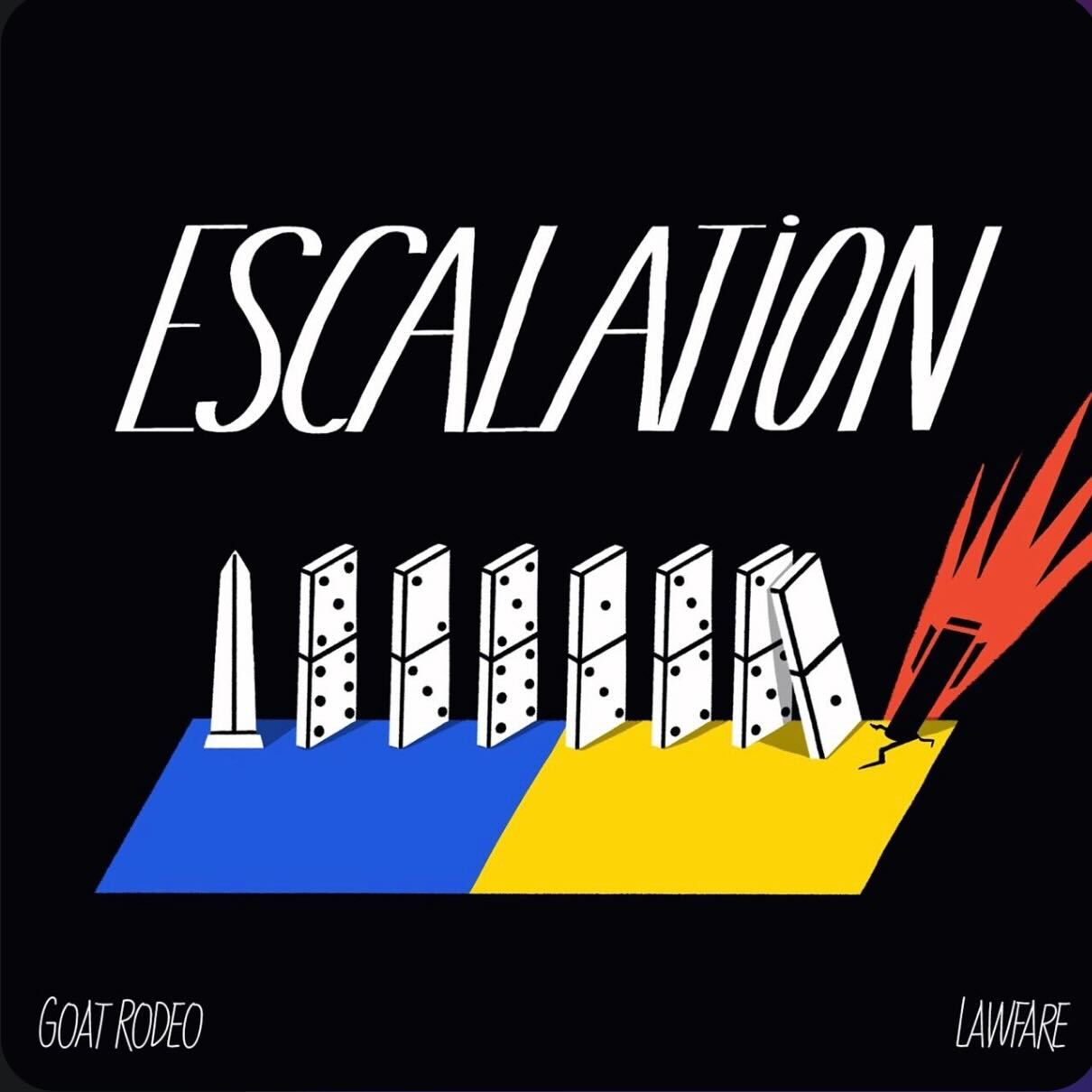Why Zelensky Replaced Ukraine’s Top General and What It Means for the War
The civil-military rift became untenable, but the way ahead is not going to be easy.

Published by The Lawfare Institute
in Cooperation With

President Volodymyr Zelensky’s replacement of Ukraine’s top military leadership in early February—the most significant shake-up in Kyiv since the start of Russia’s full-scale invasion two years ago—was long in the making. Zelensky cast his decision to replace Armed Forces Commander-in-Chief Valeriy Zaluzhny and other senior officers as necessary to rejuvenate the war effort after last year’s failed counteroffensive. But, although Zelensky and Zaluzhny had clashed over certain aspects of Ukraine’s military strategy, the decision ultimately stemmed from politics and an interpersonal conflict between the two men that had escalated steadily since the earliest days of the war.
Zaluzhny was a relatively unknown figure when Zelensky appointed him to his position in summer 2021. Age 48 at the time, Zaluzhny was part of a younger generation of Ukrainian officers with no experience in the Soviet military and whose careers had been defined both by the war in the Donbas, which began in 2014, and by growing cooperation with the United States and NATO militaries.
In the run-up to Russia’s full-scale invasion, Zaluzhny is credited with critical decisions to disperse ammunition stockpiles and reposition forces that enabled a small number of outgunned Ukrainian troops to blunt Russia’s main ground attack against Kyiv. His quiet preparations came as Zelensky and other top civilian leaders were publicly dismissing warnings from the United States that Russia would attack. During the Battle of Kyiv, Zaluzhny’s quick and adaptive thinking allowed Ukrainian troops to exploit the Russian army’s many blunders, saving the capital from occupation. He soon became a folk hero, lionized as Ukraine’s “Iron General.”
But his popularity was also a vulnerability. Zelensky came to see Zaluzhny, whose public approval and trust ratings gradually eclipsed his own, as a rival. For the first 18 months of the war, Zaluzhny was careful not to overtly challenge Zelensky, although the general seemed to underestimate the political turbulence created when people around him tried to capitalize on his rising star. In recent months, some of Zelensky’s opposition critics, including former President Petro Poroshenko and Kyiv Mayor Vitaliy Klychko, began promoting the idea of Zaluzhny as an alternative leader for Ukraine. Zaluzhny may not have been behind these efforts, but the perception that he was working with the opposition fueled Zelensky’s mistrust.
The political dimension of their quarrel was also about certain aspects of military strategy. The two leaders clashed over the requirements for further mobilization, and neither wanted to bear the political responsibility for championing an unpopular decision. They also disagreed at times about certain operational issues, most notably during the Battle of Bakhmut in early 2023. Zelensky wanted to hold the city at all costs, especially after his address to the U.S. Congress in December 2022, when he depicted the battle as a pivotal one that would determine the trajectory of the war. Zaluzhny urged a tactical withdrawal once it became clear that the battle was unwinnable, fearing that continuing to fight there would deplete the more experienced Ukrainian brigades that were needed for the impending counteroffensive.
But on one thing at least, they agreed: Both Zelensky and Zaluzhny viewed last year’s counteroffensive as Ukraine’s best chance to break through Russian lines and sever the land bridge to Crimea. It did not go according to plan. The reasons for the operation’s failure are complex. But as Ukrainian forces struggled to penetrate Russia’s prepared defenses in summer 2023, the Office of the President and the General Staff began to trade blame for what went wrong—at first through anonymous quotes in Ukrainian and Western media, and eventually in the open.
Zaluzhny and his allies complained about excessive political interference in key operational decisions and accused the president and his advisers of favoring certain generals and cutting Zaluzhny out of decisions he should have been involved in. Meanwhile, Zelensky and his allies claimed that it was Zaluzhny’s own battle plan that led to unrealistic expectations for the counteroffensive. Zelensky also felt that the army’s other failures, including reports of widespread corruption among military recruiters, were being unfairly pinned on him, with Zaluzhny escaping responsibility in the public’s eye.
By fall 2023, it was clear that Ukraine could not break through Russian lines. Zelensky continued to project confidence, in large part to secure additional Western aid. In November, Zaluzhny gave an interview with the Economist (and published an unusual military analysis) in which he acknowledged that the counteroffensive had failed and that the war had become, in his words, “positional.” Western media quickly picked up on one word in the interview: “stalemate.” Zelensky was reportedly furious with Zaluzhny for what he perceived as a major political blunder. Not only did the general’s uncoordinated message undercut Zelensky at home; it also gave ammunition to skeptics of Ukraine aid in Congress, where the situation was already tenuous after Speaker of the House Kevin McCarthy’s ouster and the eruption of war in the Middle East.
What motivated Zaluzhny to contradict Zelensky in such a public manner is not clear. He may have felt that his military advice was not being heard and that Ukraine’s battlefield position would deteriorate without a radical shift in approach. In the end, the general’s public intervention forced the president to acknowledge that Ukraine’s strategy was not working. Within weeks, Zelensky announced that he had authorized the military to build fortifications along the front lines and to dig in for a defensive phase. But trust between the two was irrevocably damaged. The president dismissed the general on Feb. 8.
Zaluzhny’s replacement, former Land Forces Commander Oleksandr Syrsky, inherits a number of serious challenges. The first is the deteriorating situation along the front. According to some reports, Russia has a fivefold artillery advantage over Ukraine, a ratio that is only getting worse for Kyiv as Congress continues to hold up aid. Russian forces are pummeling Ukrainian positions in numerous locations along the frontline. On Feb. 17, Syrsky announced that Ukrainian forces had withdrawn from Avdiivka, an industrial suburb of Donetsk. More broadly, Russian forces are adapting on the battlefield and have gained the technological edge over Ukrainian troops. Russia’s economy and defense industrial base are fully mobilized for wartime as the production of key systems and munitions among Ukraine’s allies lags.
The second challenge is mobilization. Before his dismissal, Zaluzhny had publicly said that the army would need to draft another 500,000 troops. His comments prompted a rebuke from Zelensky, who fears that a new large-scale mobilization drive will roil Ukrainian society, especially with war pessimism on the rise. Ukrainian legislators are now debating a new draft mobilization law after rejecting an initial version that they had deemed to be too far reaching.
Another set of interrelated challenges are troop morale and deficiencies in command. Frontline soldiers are exhausted. Most have fought continuously for the past two years with no significant rest period. Congress’s delay in approving new aid only adds to the sense of abandonment, with Ukrainian units forced to ration munitions in the face of a continuing Russian onslaught. The competence of commanders has also varied across the force. Some have faced accusations that they have been willing to incur significant losses to achieve minimal objectives, and with no accountability measures thereafter. The accusation touches Syrsky himself, whom some soldiers see as responsible for the costly 10-month defense of Bakhmut.
Indeed, the trust deficit is Syrsky’s biggest hurdle to overcome. Whereas the avuncular Zaluzhny was beloved by troops and seen as a deeply humane figure, Syrsky has a reputation for being more demanding and less forgiving. His critics have depicted him as a Soviet-style commander who has little regard for casualties. But his defenders object to this characterization, noting the general’s long history of engaging with NATO through training and exercises. They also note his frequent visits to frontline units and, aside from Bakhmut, point to his role in some of Ukraine’s biggest successes, including the defense of Kyiv and the lightning offensive near Kharkiv in fall 2022. His new deputies have won plaudits from knowledgeable Ukrainian military analysts.
Zaluzhny’s dismissal has left many Ukrainians disappointed and confused. But the principle of civilian control over the military means that elected leaders must have confidence in their uniformed commanders. In exchange, civilian leaders should refrain from micromanaging operational decisions and undercutting the military chain of command by interfering in personnel and planning decisions that are squarely within the armed forces’ remit. Zaluzhny lost Zelensky’s trust, for valid reasons or not. In a democratic society, Zelensky has the final say.
Syrsky’s appointment will not on its own solve the many challenges Ukraine faces in 2024, especially if Congress does not urgently approve new military aid. Ukraine’s ability to rebuild its advantage will depend in large part on whether Syrsky and Zelensky can agree on a strategy and the resources required for it. Both leaders will need to make difficult political decisions and share the responsibility for them. There is no alternative.

-(1).jpg?sfvrsn=8005020b_3)



